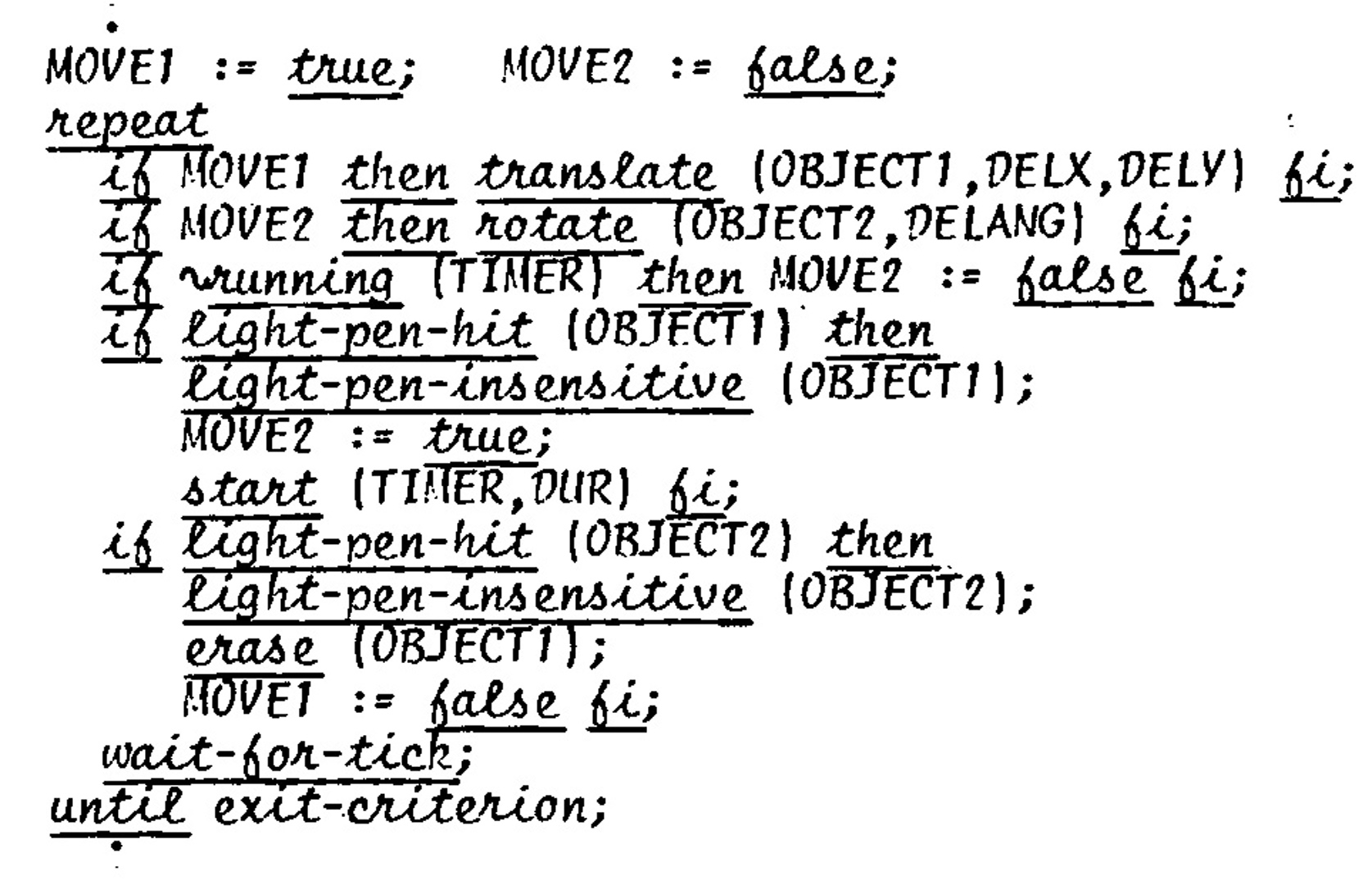“Association of graphic images and dynamic attributes” by Bergman and Kaufman
Conference:
Type(s):
Title:
- Association of graphic images and dynamic attributes
Presenter(s)/Author(s):
Abstract:
Various approaches to explicit and implicit control of time and motion in procedural real-time graphic packages and languages are discussed and illustrated. The particular approach of independentty defining static objects and dynamic attribute is introduced and developed. The procedures which alter and manipulate basic objects at interactive run time, teamed “dynamic attributes,” may be defined independently of objects as a function of time, input, and other variables. Attributes, once defined, may be associated with and dissociated from objects dynamically. Several objects may simultaneously have the identical attribute. A particular & association exists within its own zero-origin local time frame. Basic objects are static two-or three-dimensional entities in some space. Dynamic objects termed “images” may be recursively defined in teams oa basic objects and attributes. Objects and attributes are the basic building blocks enabling modular program construction. The notions presented here can be used as the basis for design of interactive graphic languages or oda the implementation of graphics packages. An experimental FORTRAN-callable package has been developed to test these notions.
References:
1. Baecker, R. M. Picture-driven animation. AFIPS 1969 SJCC Proceedings, vol. 34 (1969), 273-288.]]
2. Bergman, S. and Kaufman, A. A real-time graphics package. Ben-Gurion University of the Negev, Department of Mathematics, Technical Report MATH-122 (1975).]]
3. Bergman, S. and Kaufman, A. BGRAF2: a real-time graphics language with modular objects and implicit dynamics. Proc. SIGGRAPH ’76 (1976) 133-138.]]
4. Brinch Hansen, P. Concurrent programming concepts. Computing Surveys, vol. 5, no. 4 (December 1973) 223-245.]]
5. Cardman, S. J. Time management in real-time animation/graphics environment. Proc. SIGGRAPH ’75 (June 1975) 201-207.]]
6. Csuri, C. A. Computer animation. Proc. SIGGRAPH ’75 (June 1975) 92-101.]]
7. DeFanti, T. A. The graphics symbiosis system. Real-Time Film Animation, Annual Report to the NSF, GJ-204 (1973) 5-115.]]
8. Digital Equipment Corporation. Picture book reference manual. Order no. DEC-11-GPBMA-A-D (1973).]]
9. Frailey, D. J. Timing features for systems implementation languages. Information Processing 74 (1974) 354-358.]]
10. Futrelle, R. P. GALATEA: interactive graphics for analysis of moving images. Information Processing 74 (1974) 712-716.]]
11. Futrelle, R. P. and Potel, M. J. The system design for GALATEA, an interactive real-time computer graphics system for movie and video analysis. Computers and Graphics, vol. 1 (1975) 115-121.]]
12. IBM System/360 Operating System Graphic Programming Services for FORTRAN IV. IBM Systems Reference Library, program no. 360S-LM-537.]]
13. O’Brien, C. D. and Bown, H. G. IMAGE: a language for structured display programming. Proc. SIGGRAPH ’75 (June 1975) 53-60.]]
14. Pfister, G. F. A high level language extension for creating and controlling dynamic pictures. Proc. ACM Symposium on Graphic Languages (April 1976) 1-9.]]




